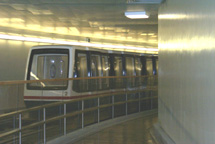United States Capitol Subway System
 |
|||||||||||||||||||||||||||||||||||||||||||||||||||||||||||
| Overview | |||||||||||||||||||||||||||||||||||||||||||||||||||||||||||
|---|---|---|---|---|---|---|---|---|---|---|---|---|---|---|---|---|---|---|---|---|---|---|---|---|---|---|---|---|---|---|---|---|---|---|---|---|---|---|---|---|---|---|---|---|---|---|---|---|---|---|---|---|---|---|---|---|---|---|---|
| Owner | U.S. government | ||||||||||||||||||||||||||||||||||||||||||||||||||||||||||
| Locale | United States Capitol Complex, Washington, D.C. | ||||||||||||||||||||||||||||||||||||||||||||||||||||||||||
| Transit type | People mover | ||||||||||||||||||||||||||||||||||||||||||||||||||||||||||
| Number of lines | 3 | ||||||||||||||||||||||||||||||||||||||||||||||||||||||||||
| Number of stations | 6 | ||||||||||||||||||||||||||||||||||||||||||||||||||||||||||
| Operation | |||||||||||||||||||||||||||||||||||||||||||||||||||||||||||
| Began operation | March 7, 1909 | ||||||||||||||||||||||||||||||||||||||||||||||||||||||||||
| Operator(s) | Architect of the Capitol | ||||||||||||||||||||||||||||||||||||||||||||||||||||||||||
| Number of vehicles | 7 | ||||||||||||||||||||||||||||||||||||||||||||||||||||||||||
|
|||||||||||||||||||||||||||||||||||||||||||||||||||||||||||
The subway system of the United States Capitol in Washington, D.C., consists of three underground electric people mover systems that connect the United States Capitol to the House and Senate office buildings.
The original subway line was built in 1909 to link the Russell Senate Office Building to the Capitol. In 1960, an operator-controlled monorail was installed for the Dirksen Senate Office Building. A two-car subway line connecting the Rayburn House Office Building to the Capitol was built in 1965. The Dirksen monorail, which had been extended to the Hart Senate Office Building in 1982, was replaced in 1993 by an automatic train.
On the House side, an older manned two-track system, with a single open-topped car operating on each track, shuttles passengers between the Rayburn House Office Building and the Capitol. On the Senate side, two separate subway systems exist. The first is similar to the one found on the House side. It connects the Russell Senate Office Building and the Capitol. The other is a computer-controlled system with three trains of three cars each that connects the Hart Senate Office Building, Dirksen Senate Office Building, and the Capitol. It is propelled by a track-side linear motor, while the train cars are unpowered. This line is mostly two-tracked but at the Hart and Capitol stations the tracks converge into one, with a single side platform. This allows easy return travel on the opposite track. The Dirksen station features a side platform for Capitol-bound trains and an island platform for Hart-bound trains. All three of these stations feature platform screen doors. A small maintenance spur is located adjacent to the Hart station. The House and Senate subway systems do not terminate in the same location under the Capitol, but they are connected by a labyrinth of tunnels.
...
Wikipedia
